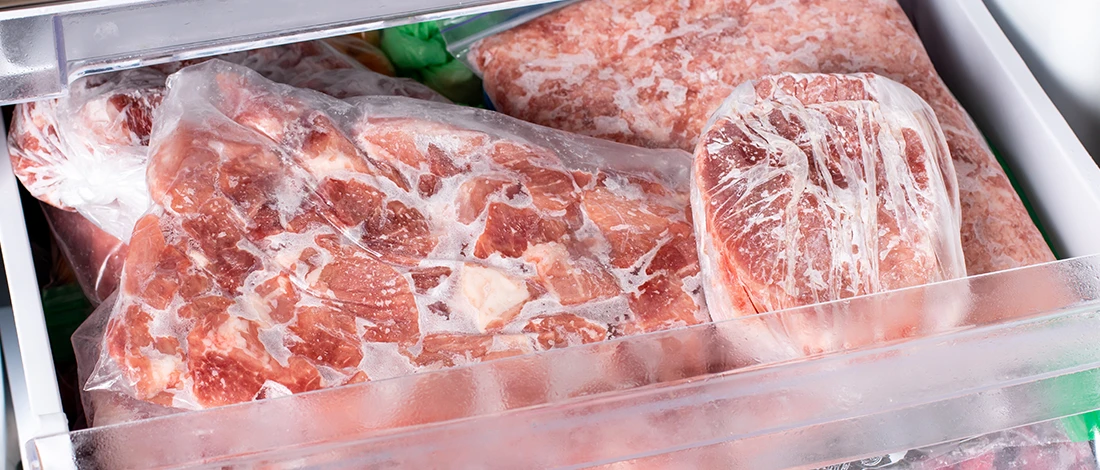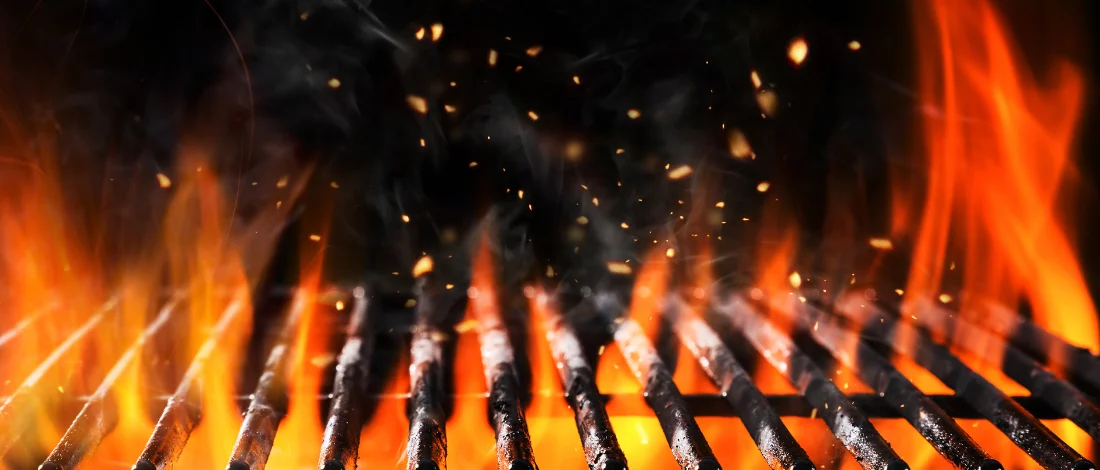I love having beef bone broth whenever I feel like eating something light. It has become a great supplement to my 10+ years of carnivorous diet, and I prepare it once every week.
Before I cook my beef bones, I always cut them for easier cooking. Because of this, I've become very consistent with the methods I use to cut bone.
Having tested dozens of bone-cutting knives from the leading brands, I’ve finally narrowed my list to these eleven knives for cutting meat and bones and ranked them based on performance, durability, and price.
Here are the three efficient methods for cutting bone, as taught by my local butcher.
Quick Summary
- Sharp knives will serve you well when deboning and cutting bone.
- The pinch and batoning method is recommended for small and medium bones, while bigger bones require using a hammer swing.
- Use cut bones to make soups, broth, or stew.
3 Ways to Cut Bone

Here are the three most efficient methods for cutting bone.
1. Pinch Method
The pinch technique works best when cutting small bones, so I don't recommend using this method to chop larger bones.
Here's how you do it:
- Start by removing any large portions of raw meat. Once the large parts have been removed, you can scrape the smaller pieces with a knife.
- Use a pinch hold for the cleanest cut possible when cutting through meat and bone. You can pinch the knife to cut through objects by putting the handle in your palm and extending your pointer and thumb to the blade's heel.
- Place the knife directly on the bone, aligning the blade where you want to cut through the bone.
- Firmly push down on the knife, and the blade should pierce the bone on the cutting board.
"If a knife isn't made for cutting bone, it may slide off the bone and fail to cut where you want it to."
- Jonathan Abrahams, American Chef
2. Batoning Method
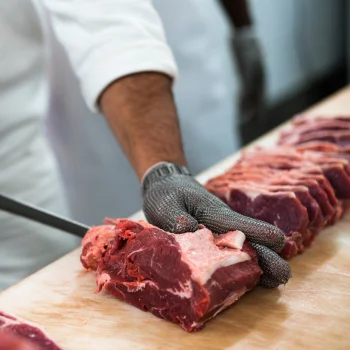
The batoning method is ideal for cutting bones of small and medium sizes.
Follow these simple steps:
- Position the knife where you want to cut the bone. A knife with a thick spine is the ideal choice for this technique.
- Line it up with the knife's spine using a mallet or your hand.
- Hit the top of the knife with a mallet swing or your fist. This should provide a nice crunch sound as it passes straight through the bone.
3. Hammer Swing Method
Larger bones can be cut through most effectively with a hammer swing or a bone saw, but smaller bones shouldn't be handled with it because it isn't very accurate.
It functions as follows:
- Bring your bone-cutting knife up to chest height with a firm grip in your hand.
- Swing down quickly and chop the bone with the help of gravity.
- Hold the knife tightly enough to prevent it from slipping out of your hand during the swing or cutting bones without straining your fingers.
Are Cut Bones Healthy?
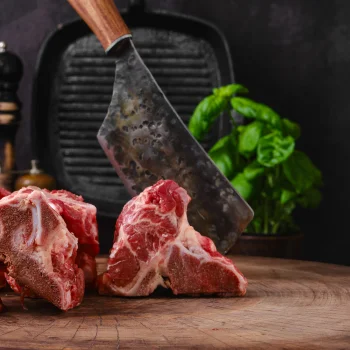
Yes, cut bones are healthy. Beef bones are an excellent source of phosphorus, iron, sodium, potassium, calcium, and magnesium [1] [2].
The development and repair of tissues and cells depend on phosphorus [3]. Plus, it contributes to the metabolism of minerals like calcium.
The body needs magnesium for several processes, including the skeletal system, energy synthesis, and muscle health [4].
For blood pressure and fluid balance, sodium is crucial as the health of the heart and muscles is influenced by potassium [5].
The bone marrow contains many omega-3 fatty acids that are advantageous for inflammation, brain function, and heart health [6].
5 Tips on Meat-Deboning

Here are some of my tips on deboning meat when you need to:
- Picking the right knife: When deboning, there is a wrong knife to use because most knives are not used when chopping bone. If you are serious about your meats, you should get a quality deboning knife to make the process easier.
- Use sharp knives: Deboning knives can become dull quickly, so you should ensure they are sharp before cutting meat. If you are not careful, using a dull blade could cause you harm.
- Use the right cutting board: Verify the stability and cleanliness of your cutting board. I suggest using a plastic cutting board because it is simpler to clean. After having raw meat on it, a wood-cutting board is difficult to sanitize. Ensure the cutting board has a non-slip bottom to prevent it from shifting while cutting.
- Take your time: It takes skill to separate the meat from the bones, and rushing it might be harmful. Take your time when chopping the meat away to prevent typical accidents that can happen at this point.
- Cut away from your body: It's imperative to cut in the direction away from your body whenever you're slicing through flesh or bones, especially when using highly sharp blades.
Tips on Cooking Cut Bones
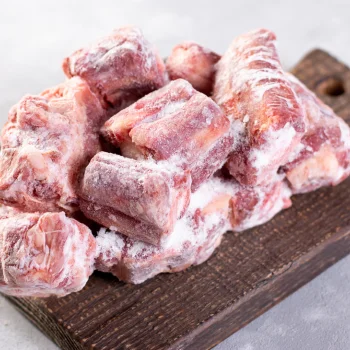
There are numerous ways to prepare cut bones for cooking. They can be roasted, boiled, or simmered.
The quickest and easiest method of cooking beef bones is to boil them.
Additionally, it is the finest method for obtaining all of the nutrients from the bones. Put the beef bones in a pot of water and boil them to begin the boiling process.
Then turn down the heat and simmer for 16 to 24 hours.
Another quick and simple method to prepare beef bones is to roast them.
Their flavor will be more robust after roasting. To roast beef bones, preheat the oven to 400-450°F.
After that, cook the beef bones for 20-30 minutes on a baking pan.
If you want to try a slow-cooking method, place the beef bones in a slow cooker or crockpot and turn them on low to slow-cook for 24 hours or more.
Related Articles:
Storing Cut Bones
Cut beef bones can be frozen for 6-12 months. They can also be kept for up to a week in the refrigerator.
I recommend carefully wrapping them in freezer paper if you intend to keep them for a longer amount of time.
Freezer burn will be avoided in this way. Beef bones should defrost overnight in the refrigerator before use.
Avoid thawing them at room temperature since this can encourage the growth of bacteria.
FAQs
Can You Cut Beef Bone With a Knife?
Yes, you can cut beef bone with a knife, but it has to be a quality knife made explicitly for cutting bone. Not every blade is strong enough to cut bone.
What Knife is Used to Cut Bone?
You can use a butcher knife, chef knife, or a cleaver knife to cut bone. These knives are the best when cutting bone.
Can a Sharp Knife Cut Bone?
Yes, a sharp knife can cut bone as long as it's one made to chop bones. It makes the whole process quick and simple.
References:
- https://www.researchgate.net/publication/274715640
- https://www.hsph.harvard.edu/nutritionsource/calcium/#
- https://www.ncbi.nlm.nih.gov/pmc/articles/PMC7599912/
- https://ods.od.nih.gov/factsheets/Magnesium-HealthProfessional/
- https://www.cdc.gov/salt/potassium.htm
- https://www.hsph.harvard.edu/nutritionsource/what-should-you-eat/fats-and-cholesterol/types-of-fat/omega-3-fats/


